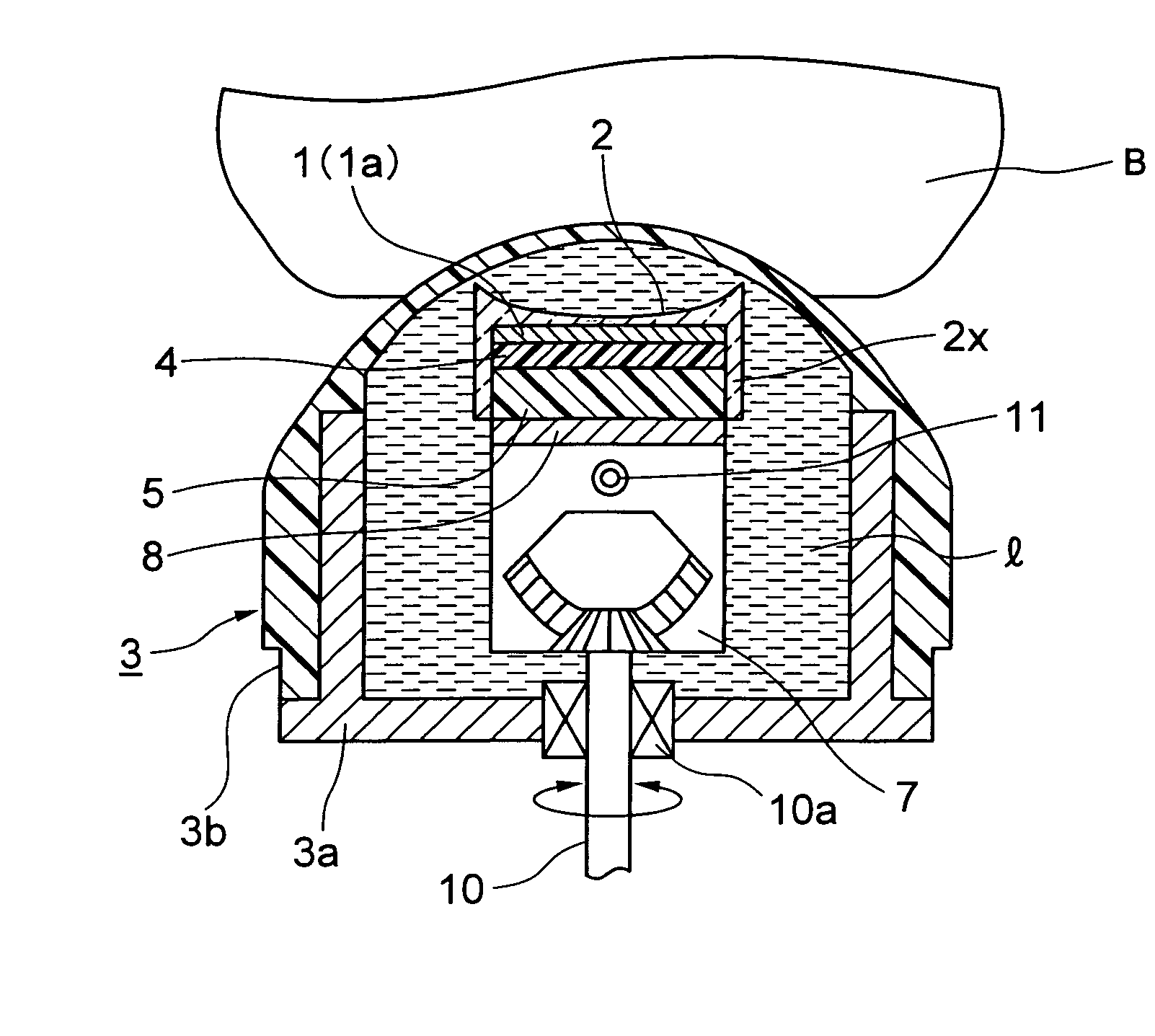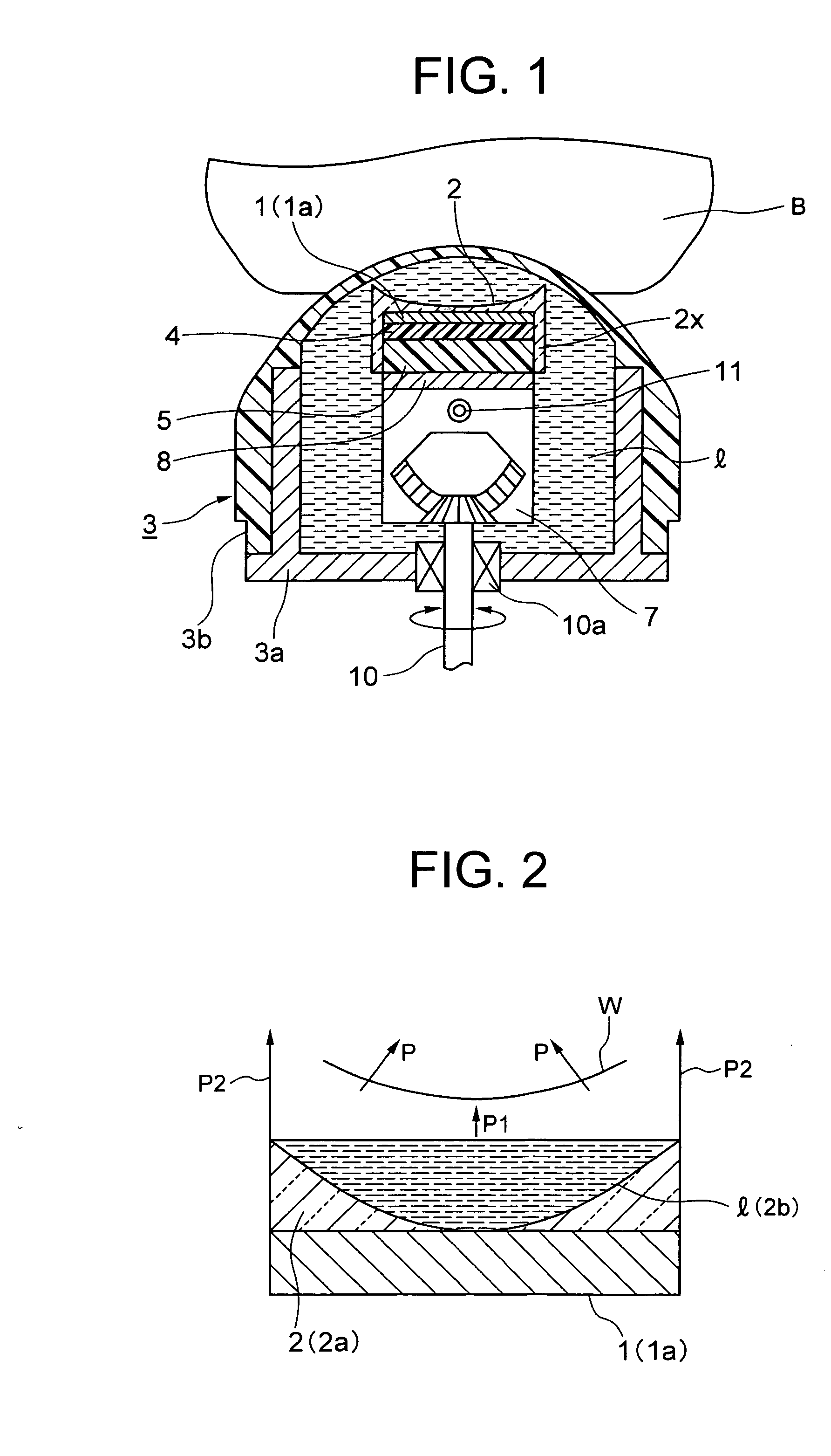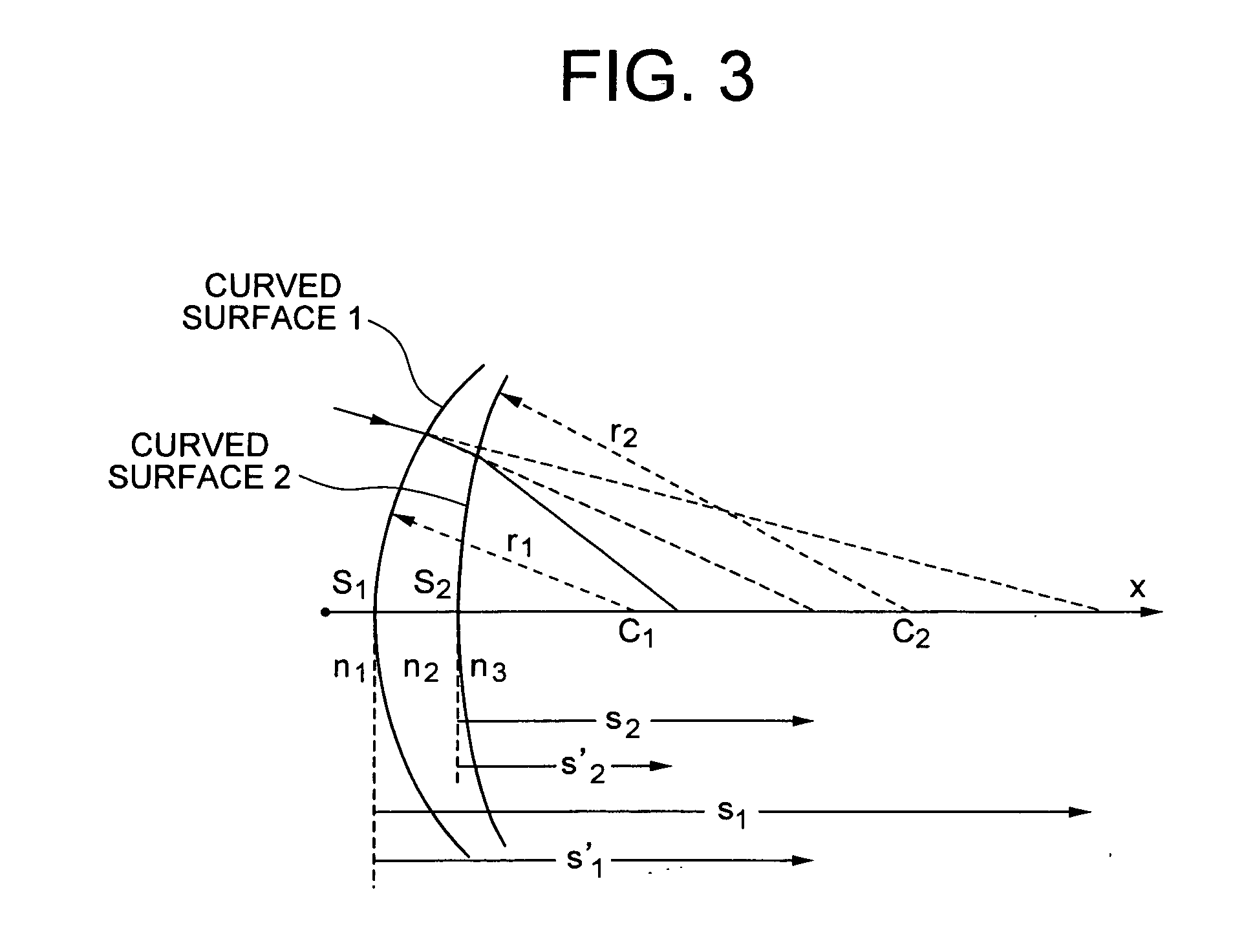Minor axis motion type ultrasonic probe
a motion-type, ultrasonic probe technology, applied in the field of minor axis motion-type ultrasonic probes, can solve the problems of affecting the normal transmission and reception of ultrasonic waves to and from a living body, and affecting so as to suppress the propagation loss of ultrasonic waves and improve the sensitivity of the probe. , the effect of increasing the curvature of the lens
- Summary
- Abstract
- Description
- Claims
- Application Information
AI Technical Summary
Benefits of technology
Problems solved by technology
Method used
Image
Examples
Embodiment Construction
[0032]FIG. 1 is a minor axis direction sectional view for describing an embodiment of an ultrasonic probe of the present invention.
[0033]The ultrasonic probe of the present invention is configured such that a piezoelectric element group 1 arranged in the major axis direction and with an acoustic lens 2 having a predetermined curvature in the minor axis direction provided on an ultrasonic wave transmitting / receiving surface side, is housed within a sealed container 3.
[0034]The inside of the sealed container 3 is filled with a liquid l that serves as an ultrasonic wave medium, and the piezoelectric element group 1 is fixed on a fixed base 8 that rotates / oscillates within a container main body 3a, so as to rotate / oscillate in the minor axis direction of the ultrasonic probe. Furthermore, ultrasonic waves from a cover 3b side are transmitted / received to / from a living body B.
[0035]Moreover, in this embodiment, the acoustic lens 2 is made as a concave lens 2a having a pair of leg sections...
PUM
 Login to View More
Login to View More Abstract
Description
Claims
Application Information
 Login to View More
Login to View More - R&D
- Intellectual Property
- Life Sciences
- Materials
- Tech Scout
- Unparalleled Data Quality
- Higher Quality Content
- 60% Fewer Hallucinations
Browse by: Latest US Patents, China's latest patents, Technical Efficacy Thesaurus, Application Domain, Technology Topic, Popular Technical Reports.
© 2025 PatSnap. All rights reserved.Legal|Privacy policy|Modern Slavery Act Transparency Statement|Sitemap|About US| Contact US: help@patsnap.com



